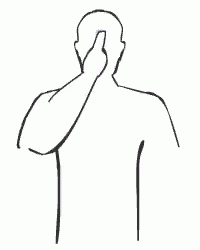St. John Chrysostom, 4th century Bishop of Constantinople, recognized the biblical nature of the sign of the cross. He encouraged his flock, “When, therefore, you sign yourself, think of the purpose of the cross, and quench any anger and all other passions. Consider the price that has been paid for you.” Tertullian in the 3rd century wrote of the universality of this custom, “In all our travels and movements, in all our coming in and going out, in putting on our shoes, at the bath, at the table, in lighting our candles, in lying down, in sitting down, whatever employment occupies us, we mark our forehead with the sign of the cross.” St. Basil (writing also in the 4th century) reported that the Sign of the Cross originated in apostolic times, taught that the sign of the cross was a tradition the originated with the apostles, “who taught us to mark with the sign of the cross those who put their hope in the name of the Lord.” Athanasius, the great 4th century Bishop of Alexandria who almost single-handedly stood for Christian orthodoxy against the powerful Arian heresy, taught his flock that “by the sign of the cross…all magic is stayed, all sorcery confounded, all the idols are abandoned and deserted, and all senseless pleasure ceases, as the eye of faith looks up from Earth to heaven.” Again in the 4th century, Cyril of Jerusalem echoed Tertullian as he encouraged the Church: “Let us not be ashamed to confess the Crucified. Let the cross, as our seal, be boldly made with our fingers upon our brow and on all occasions over the bread we eat, over the cups we drink, in our comings and in our goings, before sleep, on lying down and rising up, when we are on the way and when we are still.”
How foolish for Lutherans to reject this practice as Roman! Perhaps we are grasping at straws to justify our own uneasiness for things Lutheran? Based on early descriptions we can infer that the gesture was first made with one finger tracing a T or an X on the forehead. Possibly, the early Christians took their cue from Genesis 4:15, Ezekiel 9:4, and Revelation 14:1 and 22:4. Then the gesture took on more elaborate forms with two fingers used to indicate the two natures of Christ or three fingers to indicate faith in the Trinity. While the origin of the sign of the cross is obscure, it is evident that the early Christians saw it as an orthodox ceremony, fitting piety, and a good and blessed practice. The sign of the cross is more than a ritual gesture -- it is faith in motion. It was not Luther who objected to the sign of the cross but John Calvin and the radical reformers who regarded it as superstition (like just about every ceremony or ritual used in piety and practice).

No comments:
Post a Comment